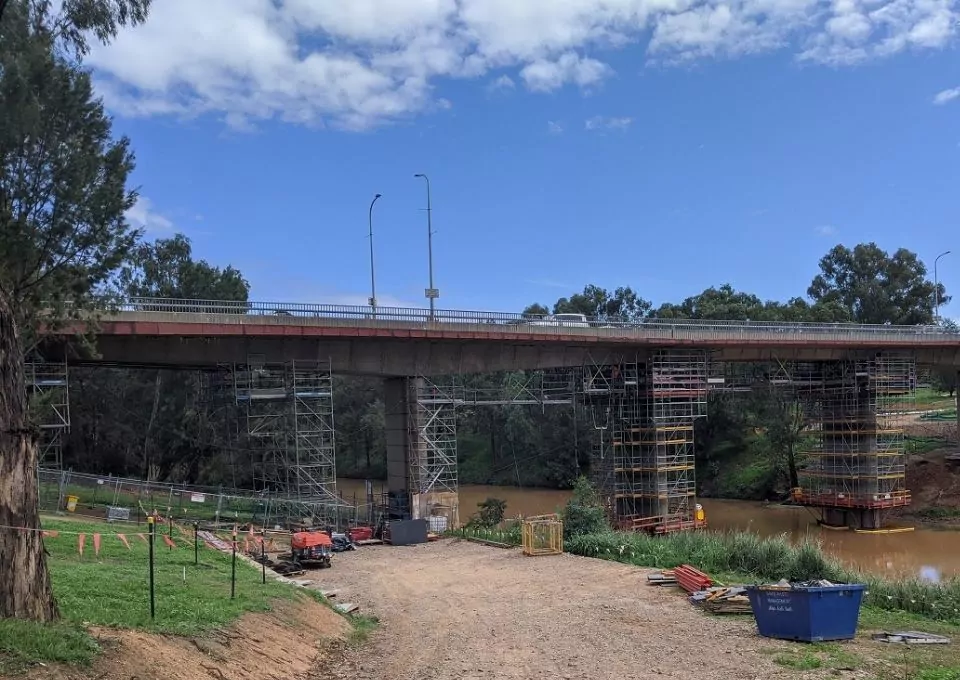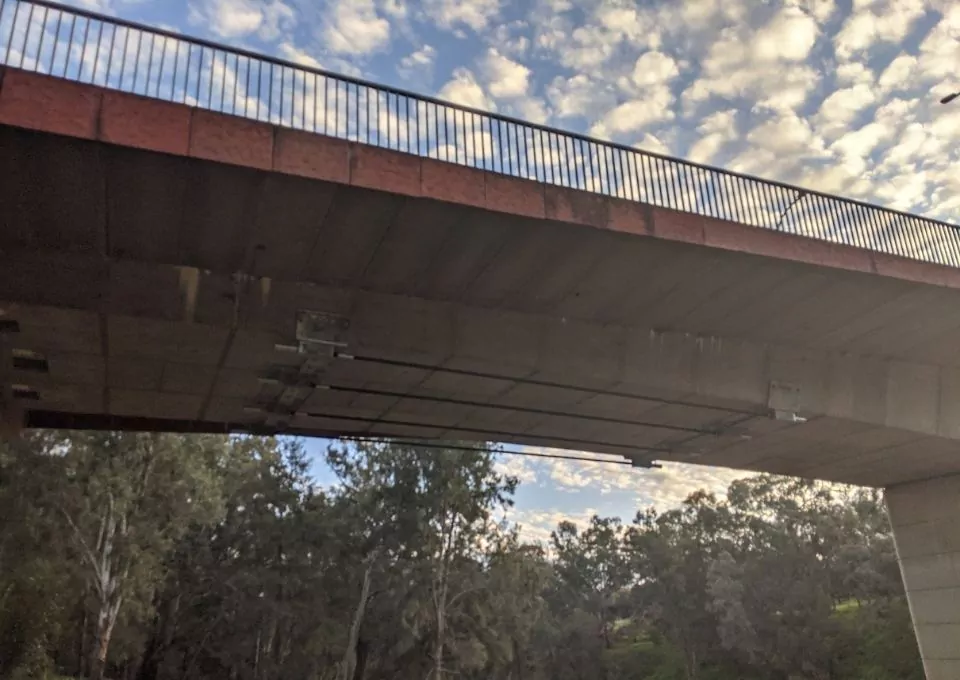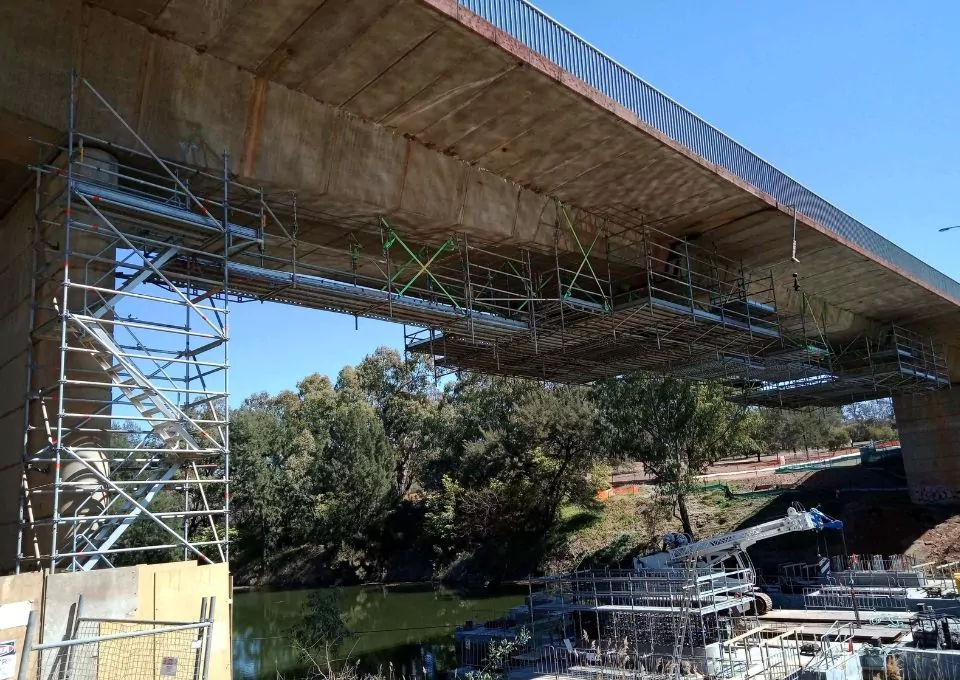Accurate drilling
Some 400, 38 mm-diameter holes were drilled into the superstructure so that brackets for the post-tensioning and the bearings could be bolted into place through the soffits and webs. No coring was permitted. Precise mapping was necessary to ensure that drilling did not damage any existing reinforcement, again to avoid any compromise of the bridge’s limited capacity.
Once these holes had been drilled, templates were produced for the external and internal components of each of the PT brackets and sent to the fabricator to ensure that the brackets would fit. Out of all of the 400 holes, only one had to be re-drilled.
New piles and piers were constructed using plant on barges on the river, and once completed, the strengthened deck was jacked up during two short, planned road closures to enable new bearings and shear keys to be installed.
By modifying the client’s original design and procedure for the bearing grouting and load transfer of the structure, Freyssinet was able to complete the work within two five-hour closures rather than the four longer shut-downs that had been initially proposed.
Unexpected challenges
One of the most challenging aspects of the project was to establish the condition of the existing structure, and adapt to previously unknown circumstances that were revealed as work progressed.
It was not until the contract was under way that Freyssinet discovered the bridge had been strengthened some time ago with post-tensioning tendons backfilled into grooves cut in the deck surface. This intervention had not been recorded on as-built drawings at the time. An unexpected hazard was approximately 8t of pigeon waste that had to be removed from the inside of the box girder before any work could begin.



